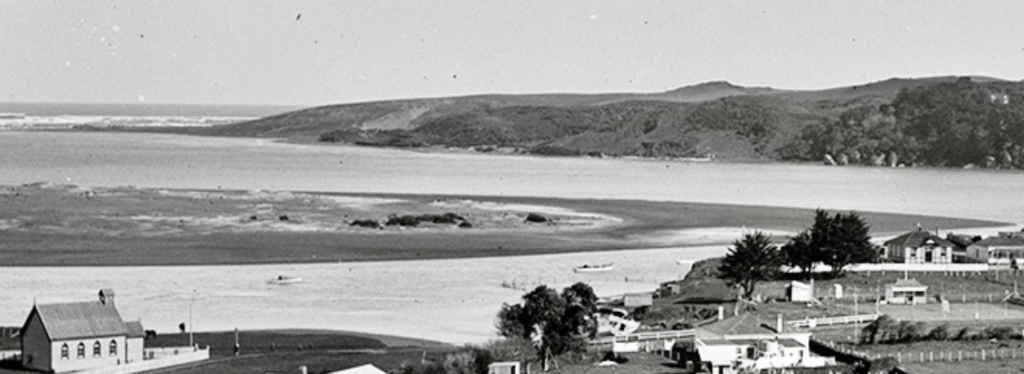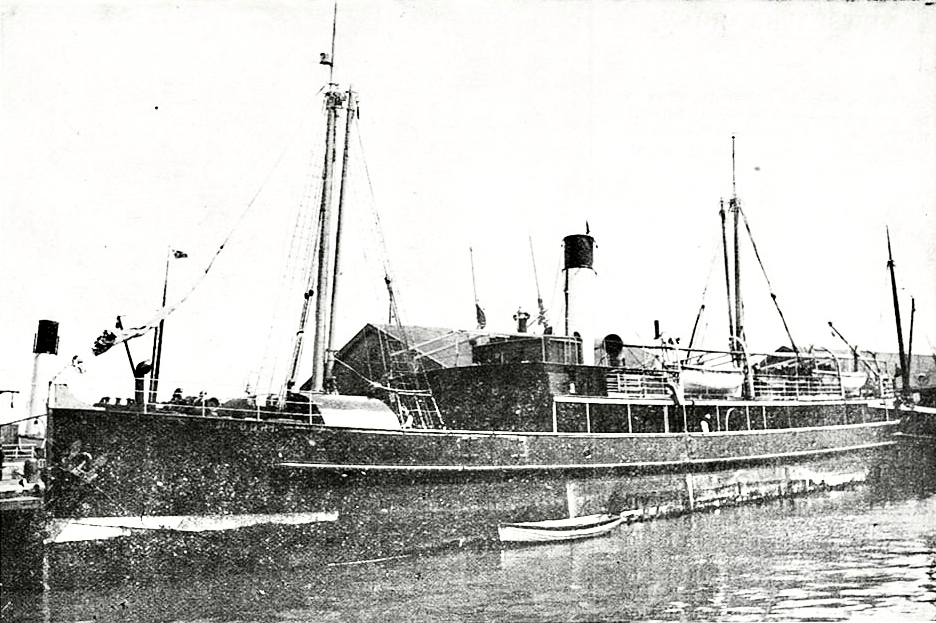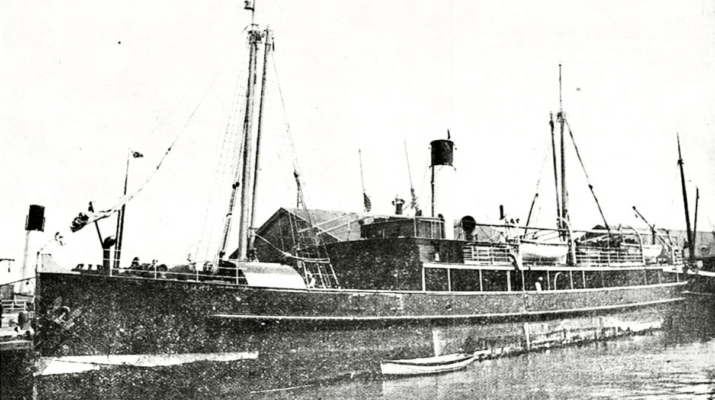Sands of time by John Lawson- Continuing our occasional history series, we look back to Whāingaroa a century ago – 1923
Whāingaroa news in 1923 was dominated by transport issues, especially who would pay for the damage to the gravel and mud roads from lorries and cars, and whether a new narrow gauge railway would relieve the roads. 1923 became the year when the railway plan (first mooted as early as 1863) was defeated and plans for road upgrades began to be implemented. 1923 was also the year when, what is now Papahua Domain, came under the control of Raglan Town Board.
The Waitangi Tribunal has heard the various views about Papahua and will make a decision on what really happened, but in 1917 the Town Board resolved to “take steps to acquire” the area, even though it wasn’t until 1919 that the Native Land Court decided who owned it. In December 1923 the Waikato Times reported that the Board had just acquired Papahua No. 2 Block, noting that even then it was usually called Te Kopua (a name Waikato District formally changed back to Papahua in 2018). Until World War 2, most Māori spoke te reo as their first language, which would have limited communication with government. For example, a Raglan man was convicted of attempted suicide (a crime until 1961), having defended himself in broken English. Conditions for the transfer included Papahua being a Public Reserve, Raglan Town Board getting no benefit from it, Pakeha and Māori having equal rights over the land and for a bridge to be built. Footbridge plans had been made in 1922, though the first one didn’t open until 1926. A bridge was important to those living along the coast; a native school site had been planned for Te Kopua in 1903, but never built, so their children still had to cross to the Stewart St school by ferry.

In 1923 Kenneth Wright was promoted from assistant to Raglan County Engineer. He retired in 1951. During that time motor cars and lorries came to dominate the roads and spending rose from £21,500 (equivalent to about $2.5m in 2022) a year to £105,200 (about $8m in 2022). In 1923 the 2,420 km2 Raglan County had 1,390km of roads (260 gravel, 750 mud and 380 tracks). Waikato District now covers 4,188 km2 and has 2,458km of roads (1,860 sealed, 598 gravel), costing ratepayers $38m a year.
In 1923 horse-drawn graders, spreading hand broken gravel, were replaced by trucks, excavators, graders and steam-powered crushers. Quarries were bought all over the County, including at Three Streams, Gibbison’s, 10 and 13 miles along the main road, Sheib’s (Te Mata), Rawlinson’s, Bell’s, Te Uku Landing, Waingaro Landing, Belcher’s and Nicholson’s, as well as taking gravel from beaches and streams.
Raglan’s average traffic, as counted about 2km from town in March, was around 11 local cars a day and 17 others. The population was about 300, but doubled in summer. An indication of the easing of travel was that Raglan played rugby against Kawhia in 1908 and 1913, but then in 1920, 1921, 1922 and 1923. In 1923, under the Highways Act of 1922, a Main Highways Board and No. 2 Group Highway District for South Auckland were set up. Half the cost of new roads came from the Board and half from ratepayers. A Government commissioner decided Hamilton had to contribute 19% of the costs of the Raglan road. Hamilton’s Mayor complained it wasn’t fair to have to pay for a road which was to be used by only a comparatively few favoured citizens with motor cars. He said Hamilton had not asked for the road to be improved, but many wealthy people now went to the seaside; about 1 in 20 people had a car. The Minister for Public Works, Gordon Coates, had set up the system, but said, “It is not for me,” adding that it had been investigated by an impartial commissioner.
Several reports talked of large numbers of visitors in Raglan. Some were attracted by the fishing, one report saying, “Last week a party secured 170 large schnapper in an hour’s fishing.” Sunday char-a-banc trips from Hamilton to Raglan were well patronised.
Counties tried to recover some money by charging carriers 6d per 100 ft of timber and licensing lorries for £20 to £50 a year. However, carriers objected to paying a fee to each authority and magistrates found reason not to apply them. For example, one asked why the Council wasn’t represented by counsel, saying he’d have to do the work which should have been done by the county solicitor. He then said there was no evidence that the carrier was plying for hire and dismissed the case. Matakowhai ratepayers objected to paying for the distant Raglan-Whatawhata road, but the court ruled against them. Similarly the government commissioner rejected toll gates, saying they were an anathema to motorists.
Raglan County’s extra rate to cover a loan of £4000 to repair the Raglan-Whatawhata road was carried by 247 to 85 votes. Campbell Johnstone was chairman of Raglan County, but also a major shareholder in Campbell Coal, created as a company in 1923. It mined a 14 feet coal seam, opened in 1922, close to the main road, near Heddon Rd, Whatawhata. The mine closed when Hamilton gasworks was replaced by a gas pipeline on 25 March 1970. A wooden tramline from the mine to the road had horse drawn trucks emptying their loads at a small siding, where lorries were loaded. There were complaints that the road was very good before the mine was opened, and was still good on the Raglan side, but that cars were getting stuck near the mine, which paid only small amounts for maintenance.
Raglan had been petitioning for a railway since 1897 and another petition was presented in 1920. Its backers said a railway would stop the heavy vehicles damaging the roads. However, it wasn’t until 1923 that the government set up a poll and they included areas such as Ngāhinapōuri in the polling district, though they were quite close to existing railways. Kawhia South also protested at being included in the Railway District, as the line for which they would be rated would stop at Kawhia. Meanwhile the Minister of Public Works and Railways, Gordon Coates, on 24 October 1922, in introducing his Highways Bill, had said, “the day will come when it will be found that through the use of motor transport certain railways in New Zealand will be relegated to a secondary place altogether, and probably will be torn up, and we shall have motor traffic taking their place.” By setting in place a system of subsidy from ratepayers and taxpayers and requiring railways to pay about 25% of their earnings to government, he ensured his prophecy came true. It doesn’t seem to have been reported in the newspapers, but Bob Vernon’s Raglan history says, “Gordon Coates, as Minister of Public Works made a firm promise to the people of the district, that if they would drop the light railway scheme, the Government would provide a sealed highway to both Raglan and Kawhia within 5 years. It must be remembered that at that time the roads were deplorable. The people fell for this promise and ditched the Light Railway Scheme. The sealed road to Raglan arrived some 30 years later”. Thus, on 4 October 1923, 9 members were elected who opposed the railway. Had the vote been limited to places close to the proposed railway, but not close to existing stations, 7 out of 10 would have supported the railway. Of such areas which would have gained from a railway, only Te Uku marginally voted against it, with large votes for the railway in places such as Raglan and Waitetuna. Calls for a railway to Raglan soon became just a part of history.
Whatawhata bridge was rebuilt by the Public Works Department in 1923 and gravelling completed almost to Te Mata. The bush along Shea’s Road was cut back.

AUPOURI. WHICH ARRIVED IN AUCKLAND HARBOUR FROM GLASGOW ON DECEMBER 15, 1905.
The Aupouri is a twin-screw steel vessel, about 460 tons, and was built by Messrs. D. J. Dunlop and Co., of Port Glasgow.
The steamers continued their weekly link with Onehunga. Rimu (412 tons), the usual steamer serving Raglan and Kawhia, was in for repair at the start of the year, so Arapawa (291 tons) was covering the run, until Aupouri (463 tons) took over in March. Aupouri also took the annual fishing excursion to Karewa – Gannet Island. As usual there were several reports of the steamers being delayed by storms. Their cargoes included butter and wool. Council was asked to reduce charges at the wharf to offset road competition, but didn’t. Sheep numbers were increasing, the returns for Raglan county being 1922 – 162,783, 1923 – 168,264, 1924 – 213,446. Other crops mentioned were oats, swedes and plums.
Work started on Te Uku Post Office and telephone exchange on 4 October, when the Chief Postmaster drove a peg in the ground, though the office didn’t open until 1927. It is now the Roast Office.
Social activities were numerous. Raglan Bowling Club agreed to admit ladies as members in 1923. There were also tennis clubs at Te Uku, Okete, Te Mata and Waitetuna and Raglan, Te Uku and Okete Hockey Clubs and other activities included Raglan Horticultural Society, Raglan A. and P. Winter Show, Raglan Rugby Football Club, Te Mata Equestrian Sports, Raglan Carnival Club, Karioi Gun Club, euchre and 500 parties, dances and balls, often well into the early hours despite the lack of electric light, ping-pong, a model yacht race, garden fete, school picnics and a farewell to Mr G. G. Griffiths, the out-going editor of the Raglan Chronicle. Music was provided on the accordion, violin and piano and from Raglan Orchestra and Raglan Town Band. A Māori group from Whatawhata performed a Moarue Nu-Akwa concert in Te Mata Hall, though the lorry bringing them broke down and they started late. Hamilton Acclimatisation Society liberated more pheasants in the Raglan, Waitetuna, Te Uku area. Rabbits were also increasing, “at an enormous rate”.
Ruakiwi school moved into a new corrugated iron building in November. Raglan school was fundraising for a piano and for gramophone records. They listened to the King’s message to the school children of New Zealand, with a powerful gramophone. It was proposed to raise £60 to put a fence around the Bow St war memorial.
In May’s local elections only two ridings were contested:— Karioi was won by Charles Swann with 98 votes to G. Vernon’s 71 and, in Whaingaroa Riding, Thomas Parker, with 84, narrowly won over C. W. Ralfe, 71 and W. J. Lusty 70. A July Raglan Town Board by-election was won by Noel Robertson by 75, to Charles Ralfe’s 42.
Raglan Town Board got approval (100:18) in a poll of the ratepayers to spend £4,150 forming, metalling, kerbing, channelling, tarring and sanding roads and footpaths, and £500 to build an office and library. They also decided to build a public rest room.
A lifeboat from the former training ship Amokura was donated to Raglan Sea Scouts and restored as an up-to-date lifeboat. Also, Frankton Boy Scouts came by lorry to camp on Greenslade Rd at, “Black Rock —just beyond the Dough Boys, some two miles from Raglan town. A shallow valley, heavily timbered with giant titree, down which a miniature stream threads its way—a triangular strip of grassy sward, and a tumbled mass of black volcanic rock on the shore.”
In 1923 the Raglan Town Board talked to the Central Electric Power Board about linking power lines from Whatawhata, or joining the Bryant House hydro electric scheme. However, the engineer said line construction over the mountain would require felling a considerable amount of bush and returns would not warrant it. It wasn’t until 1935 that Raglan got mains power.
Changes were becoming more apparent; the population was to roughly triple over the next three decades, reflecting the easier accessibility.

